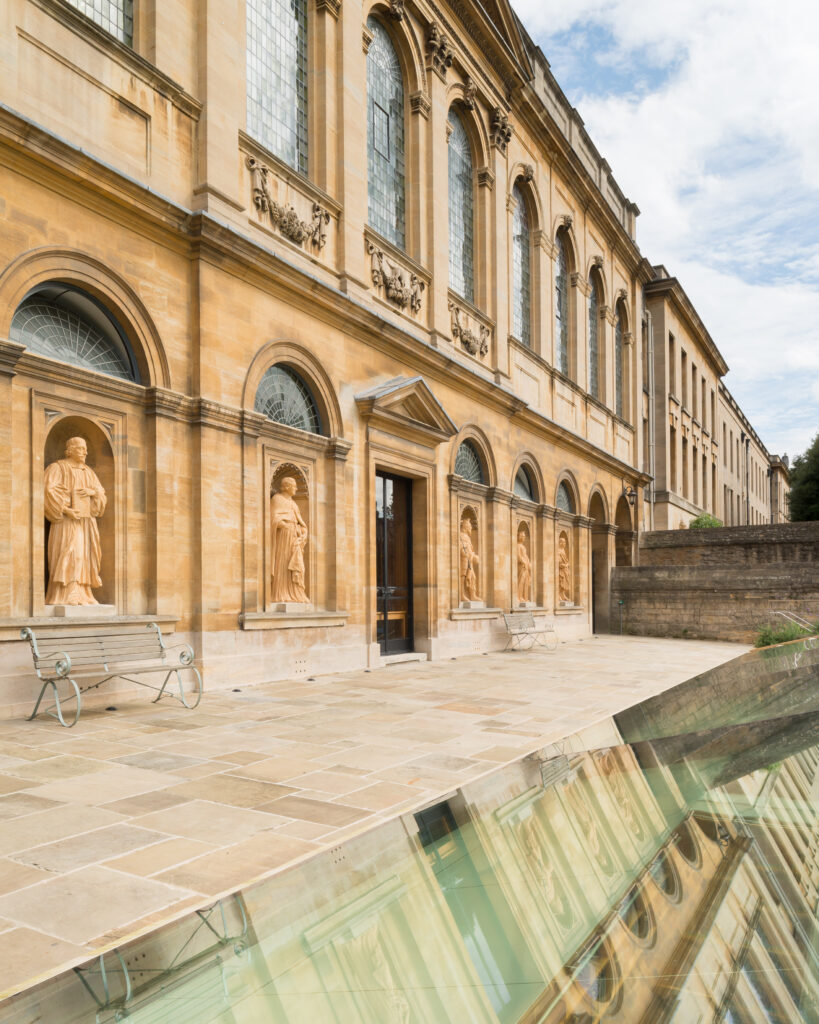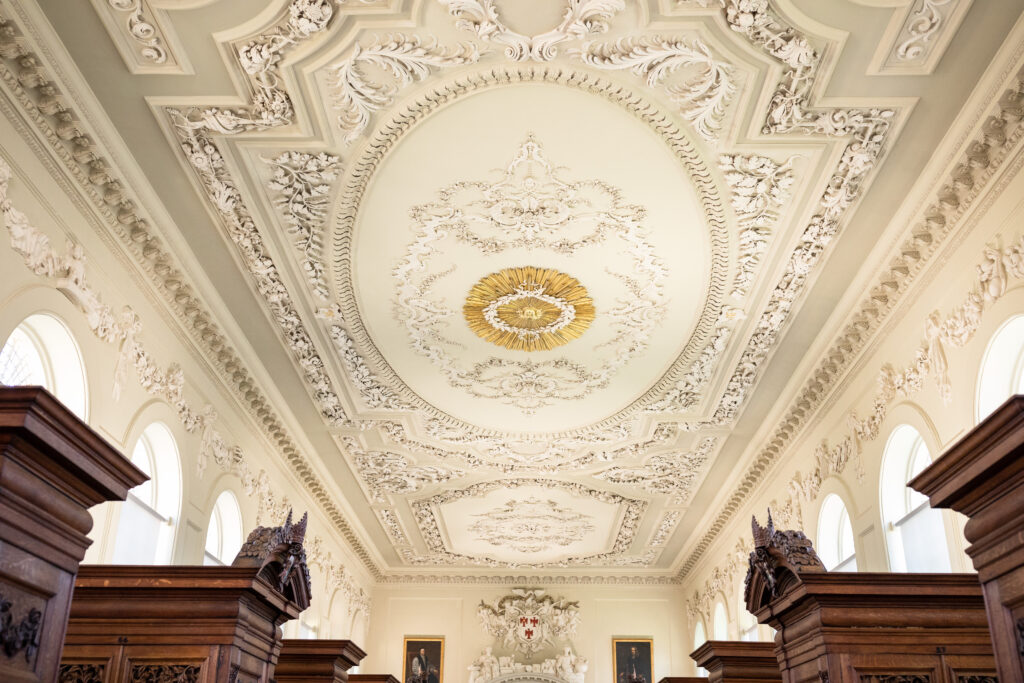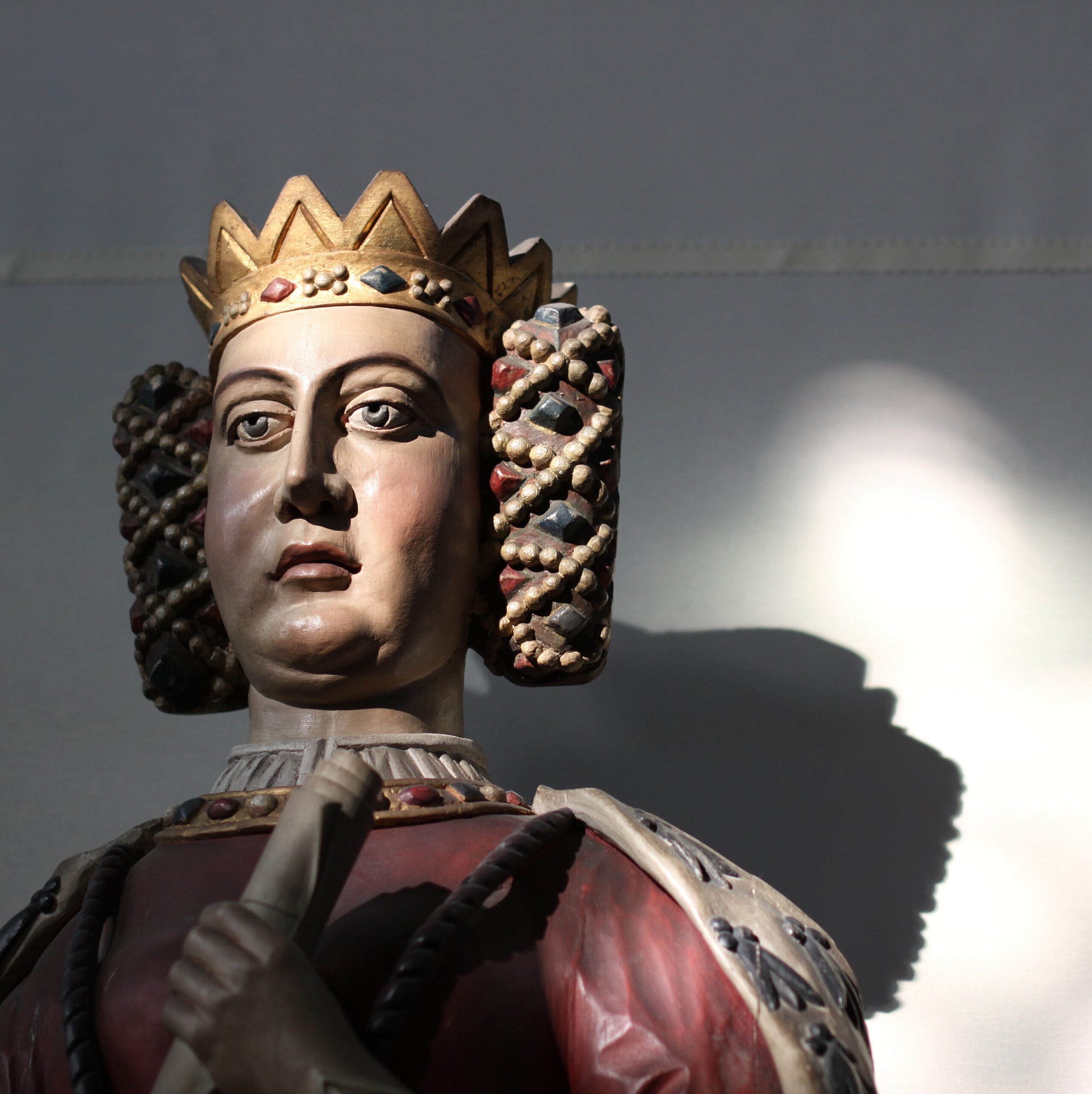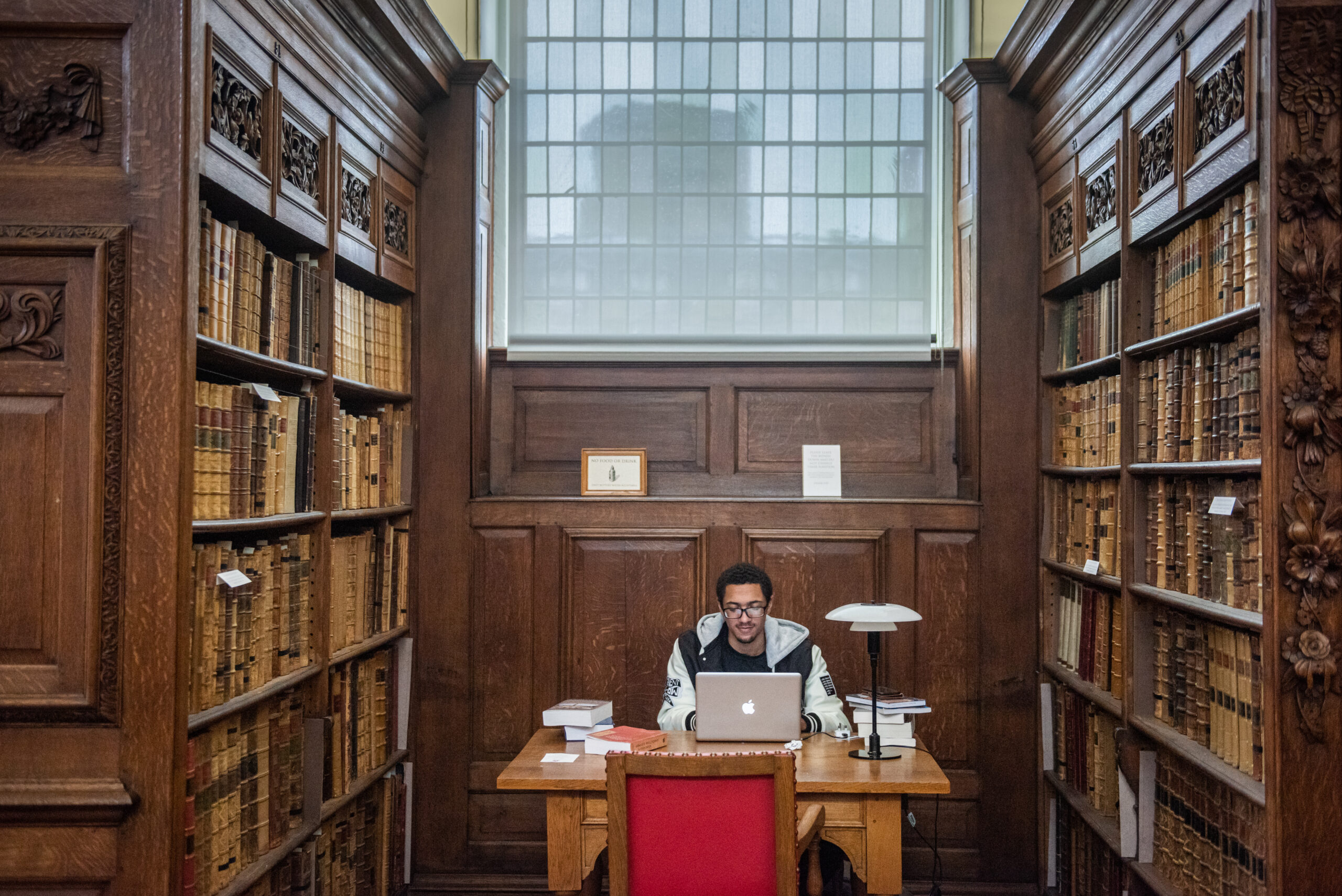There has been a library at Queen’s ever since its foundation in 1341 by Robert Eglesfield, Chaplain to Queen Philippa, consort of Edward III.
Beginnings of the library we know today
The Upper Library was built between 1692 and 1695 to house large donations from Thomas Barlow, one-time Provost of the College and later Bishop of Lincoln, and from Sir Joseph Williamson. Unfortunately, we do not know who designed the Upper Library, but the most likely candidate being Henry Aldrich, Dean of Christ Church. Aldrich designed other buildings in Oxford, and stylistic similarities suggest that he might have been the designer of Queen’s Library. However, Timothy Halton, Provost of the College at the time the library was built, is also a possible candidate. He was an accomplished man capable of designing such a building but no documentary evidence exists for either man as architect.
The builder was John Townsend and the plasterwork, perhaps the most outstanding feature, was modelled by James Hands. The stucco frieze is the work of John Vanderstein who also created the sculptures on the garden facade. The beautiful woodcarving is attributed to Thomas Minn and son.
History of the collections
The Queen’s College collection is set apart from all other Oxford college libraries thanks to a donation of £30,000 in 1841 by Robert Mason. This is equivalent to a donation of around £3.5 million in the 21st century. Mason, an Old Member, stipulated in his will that the money had to be spent solely on the Library within three years. In order to accommodate the large number of volumes purchased with Mason’s bequest, the open arcade below the Upper Library was enclosed (following the designs of Charles Robert Cockerell, professor of architecture at the Royal Academy) to form what is now the Lower Library. The Librarian of the time showed exceptional foresight: he not only purchased a great number of modern books, but also a wide selection of the greatest editions of printed books from the fifteenth to the nineteenth century. By the late 1840s Queen’s had what was probably the richest college library collection in the country.
Continued expansion
During the early twentieth century the library spread from the existing buildings to vaults beneath the back quadrangle. However, the environmental conditions in these vaults were highly unsuitable for the storage of a collection of such historical importance. There was also a need to modernise facilities for the undergraduate collections and meet growing demand for study space. Consequently, the College built new library facilities, which opened in 2017, known still as the New Library. This new building includes a climate controlled vault which now houses the majority of our historical collection, with approximately 12,000 volumes remaining in the Upper Library. Between June 2013 and January 2014 the Lower and Upper Libraries were both refurbished.
Library refurbishment 2013-2014
The Queen’s College Library is widely regarded as one of the most beautiful Baroque buildings in Oxford. It also remains a thriving centre of College academic life and is exceptional in retaining the seventeenth-century Upper Library as a reading room for students. Reasons for refurbishment were twofold: it was vital for the preservation of the historical space, but equally needed to maintain a high quality environment for readers. Originally a part of the planned Library extension, the refurbishment went ahead as a standalone project between June 2013 and January 2014. The project successfully enhanced the Library’s historic features and character, while making it a cleaner, brighter and more inviting environment in which to study.
The Library exterior
For 12 months the Library exterior was clad in scaffolding to enable a complete re-roofing as well as repairs to the stonework. Restoration work was carried out on the two Queen’s stone eagles, tympanum and swags (on the eastern façade) by Cliveden Conservation. The repair process for stonework of this nature was intricate: small repairs were made in-situ, whilst significantly damaged stonework required clay models and silicone moulds to guide the workshop stone carving process. After the repairs were put in place they were given several coats of copperas (ferrous sulphate) to help them blend in with the surrounding stone. Among the most elaborate of repairs was the replacement of Wisdom’s head.
The Upper Library
The crux of the interior refurbishment lay in the restoration of the Upper Library. Before any renovation could begin, specialists movers from Crown Fine Art had to carefully pack and move into storage the manuscripts, globes, orrery and the statue of Queen Philippa.
Using just fine paintbrushes and de-ionised water, the intricate plasterwork of the ceiling was painstakingly cleaned. The flat surfaces were repainted to match the original paint scrapes. For this to happen, a birdcage scaffold was installed in the Upper Library allowing close-up views of the plasterwork.
The inside windows were refurbished and layers of UV film were removed from the individual panes. These were installed just before the millennium to protect the Upper Library books from light damage but their efficiency had decreased over time. Following contemporary conservation advice, special transparent UV blinds were commissioned to hang over the windows panes instead of adhere film to them.
Layers of grime, dirt and lacquer were meticulously removed from the floor using sharp knives to scrape away at the surface. The result has revealed the original grain and colour of the wood. The master carpenter of the project also worked on the wooden bookshelves to re-carve some of the missing detail.
As well as restoring the Library to its original glory, work was done to bring the building into the twenty-first century. New lighting, heating and ventilation systems were installed to create a comfortable working environment. After some complex internal modelling it was decided to replace the old radiator system with under-floor fan coil units capable of both heating and cooling the Library. This system models the form of fresh air ventilation from floor vents that existed in the Upper Library prior to the construction of the Lower Library in the 1840s.
The Lower Library
The greatest transformation to the Lower Library resulted from the cleaning and waxing of its wooden surfaces, which included bookcases, floors and panelling. In conjunction with the repainted ceiling, LED bookcase downlighters and a new carpet have been installed and the space has become noticeably lighter and brighter. A local Oxford joinery was contracted to refurbish the existing tables and assemble new, more comfortable chairs – as directed by student opinion.
With the opening of the New Library in 2017, the Lower Library was restored to the original layout designed by Cockerell. This has made the space more open and airy. It remains one of the most popular areas of the library to work in.
The New Library
In 2017, the College completed a multi-million pound project to extend and modernise the Library by going underground. The result is an award-winning space containing a truly accessible research centre with a wide range of source material, from medieval manuscripts to the latest digital resources. Our nationally recognised historic collection is now stored with the College Archive in optimum conditions. We have inspiring exhibition spaces and a dedicated reading room to ensure that these treasures are used and appreciated. The new reader spaces and variety of study options on offer are popular with current students and researchers alike.
Queen’s now enjoys one of the largest libraries in Oxford, comprising the best of the 17th, 19th and 21st centuries.



